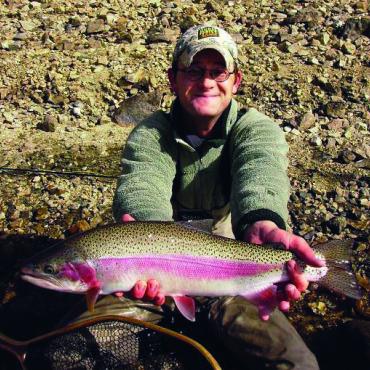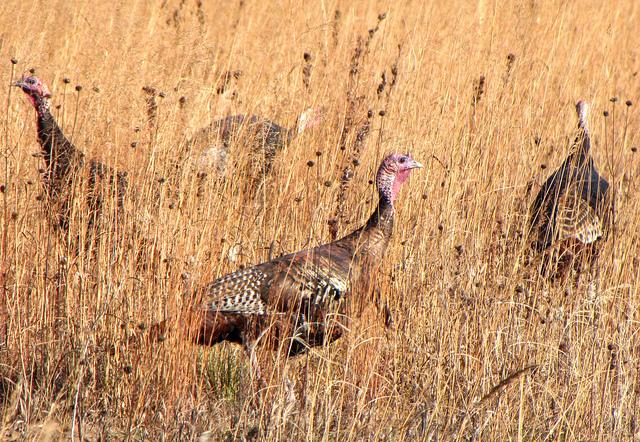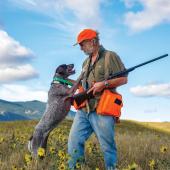Fowl Play
Spring turkey hunting.
Wild turkeys, not unlike their namesake whiskey, can bring an otherwise sane person to the heights of elation, the depths of depression, or the brink of madness. While not native to the state of Montana, this wily fowl has proven its staying power against the Treasure State’s harsh climate, numerous predators, and legions of experienced hunters. Fortunately for these sportsmen, Montana’s spring turkey season lasts just over a month, from mid-April through mid-May.While the bulk of the turkey population resides in the state’s eastern reaches, good-sized flocks do exist in several areas in the western and southwestern parts of the state.
History
In 1954, state biologists introduced 13 birds from Colorado to an area around the Judith Mountains in south-central Montana. The second release of birds took place the following year near Ashland. This introduction used 18 birds from Wyoming that proved hearty enough; after 1957, out-of-state birds were no longer needed.
Biology
The Merriam’s turkey (Meleagris gallopavo) has about as much in common with its domestic brethren as a Yorkie terrier does with a wolf. Wild turkeys have keen color vision, excellent hearing, and a complex communication system that can alert an entire flock to danger with just one cluck or yelp. Mature males have a prominent purplish-red neck wattle, blue to whiteish head, a beard, and long spurs on their legs. Females are slightly smaller, less colorful, and usually lack the beard. The back and breast feathers of the female are tipped with a tannish-white, while those of the male are almost jet black, depending on maturity. The average adult male, or tom, of the species can be up to 48 inches tall and weigh in at over 16 pounds. Conversely, the mature hen will usually be about 34 inches tall and weigh only nine pounds.
Tactics
The wild turkey is the second most popular game animal in the United States, trailing only white-tailed deer. However, their cunning and adaptability make them more like elk when it comes to the skill level required to successfully hunt them. Plan on spending a lot of time walking, and even more time glassing. Look for likely roosting areas, feeding grounds, and watering holes and plan on being on stand long before sunup. Spring turkey tactics are like those that work for rutting elk during archery season. However, due to the popularity and history of turkey hunting, calling, decoying, and stalking tactics are too numerous and technical to address here. Camouflage is crucial; make sure to match your patterns to the foliage and terrain of your chosen hunting area. When choosing a stand or blind, be sure that your outline is blocked or sufficiently broken up; the crook of an elbow or the top of a head silhouetted against the morning light will quickly scatter an entire flock.
Means of Harvest
In Montana, wild turkeys can only be taken with archery equipment or a shotgun. For the archer, do some research on the preferred arrows and broadhead set-up for birds, and remember that most of your shots will have to be taken from a sitting or kneeling position. For shotgunners, the trusty .12-gauge with a full choke and two- or four-shot has been field-proven. Turkeys are big, and those feathers can act like armor plating, so the best advice is to get as close as you can and aim for that big colorful head.
Regulations
By the time you read this, Montana FWP has set regulations, seasons, quotas, and held the drawing for 2017 special turkey permits—the applications were due March 3. If you happened to miss the deadline, don’t fret. General spring turkey hunting can still be done in the areas of the state that don’t require special tags. Hunting regions in Montana are almost entirely limited to the eastern part of the state, and two western regions. Consult the 2017 upland bird and turkey regulations for accurate, up-to-date information.
Hotspots
If you can gain access to private land, just about anywhere east of Big Timber should produce a turkey or two, with enough effort. Popular public-land areas for gobblers are the Long Pines and Ashland areas of the Custer-Gallatin National Forest, portions of Fergus County, and the C.M. Russell National Wildlife Refuge. The key word here is popular, so don’t expect solitude. As always, hunt safe; accidents increase with high concentrations of hunters.
For more information on wild turkeys and turkey hunting in Montana, visit nwtf.org or fwp.mt.gov.
Kurt Dehmer owns Durty Kurty’s guide service in Bozeman.











